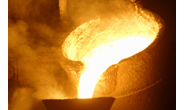International Steel Mills

CISA “Astonished” by Steel Association Opposition to Chinese Market Economy
Written by Sandy Williams
December 1, 2015
In early November, nine steel associations released a statement expressing their opposition to China’s bid to become a market economy by December 2016. In a November 25 rebuttal, the Chinese Iron and Steel Association (CISA) said it is “astonished” by the group’s claims that China is primary global contributor to steel overcapacity.
CISA called the Chinese steel industry a “victim of trade protectionism” and said the steel group was using steel trade issues as an excuse to deny market economy status to China. Blaming China for the world’s steel industry difficulties isn’t a helpful solution said CISA.
“To simply attribute the difficulties in one country or region to the Chinese enterprises is not responsible, nor is beneficial for solving the industry difficulties in their own country or region and promoting the smooth development of the global steel industry,” wrote CISA.
CISA admits overcapacity in the steel industry is a problem but has taken measures to resolve the problem by cutting obsolete capacity. Since 2011, China has eliminated 77.8 million tons of crude steel capacity and has further cut production to adjust to market demand, said CISA. In the first ten months of 2015, CISA said China has reduced year over year crude steel output by 2.23 percent, or 15 million tons. Cutting capacity takes time, said CISA and notes that the US and European countries spent more than decade resolving overcapacity in the 1970s.
In response to criticism regarding the level of steel exports from China, CISA attributes the increase in exports to steel demand. CISA admitted the exports have had an impact on some countries and regions and has tried to make adjustments.
“However, it cannot be denied that the increasing exports are mainly due to the market forces and competitiveness and Chinese steel products are popular in the export destinations, bringing about benefits for many consumers,” wrote CISA.
“China Iron and Steel Association and Chinese steel mills always give high priority to the issues arising from steel trade. On the one hand, we actively strengthen industry self-regulation and further regulate the export order; on the other hand, we seek proper solutions through ways of communications, dialogues, negotiations, exchanges and cooperation, etc., which have achieved better results.”
The American Iron and Steel Institute issued a statement a day before the CISA rebuttal regarding the annual bilateral trade meeting between the US and China. AISI President and CEO Thomas J. Gibson said the meeting was an “important step forward on addressing the issue of China’s steel overcapacity.” The U.S. government fact sheet on the meeting recognized that “China’s exports of steel and aluminum are large and growing, and are the central cause of a glut of supply on the global market.”
Gibson reiterated in the statement, “Overcapacity in China’s steel industry is a major factor fueling the import surge currently injuring the U.S. industry.”
Below are the comments related to the steel and aluminum industry in the Department of Commerce Fact Sheet on the 26th U.S.-China Joint Commission on Commerce and Trade:
“China’s exports of steel and aluminum are large and growing, and are the central cause of a glut of supply on the global market. They also are contributing to rapidly falling global prices and severe trade frictions. The United States welcomes China’s willingness to engage in intensified discussions regarding these critical developments.”
“Steel: The U.S. and Chinese governments and industry representatives agreed to hold discussions in 2016 regarding capacity, production and trade in the steel sector, including updates on progress made with regard to China’s July 2014 U.S.-China Strategic and Economic Dialogue (S&ED) commitment to establish mechanisms that strictly prevent the expansion of crude steelmaking capacity and that are designed to achieve major progress in addressing excess production capacity in the steel sector within five years. The two sides will exchange information on steel capacity developments in each economy through the JCCT’s U.S.-China Steel Dialogue.”
“Aluminum: The United States and China agreed to intensify their discussions regarding overcapacity in the aluminum sector in 2016.”

Sandy Williams
Read more from Sandy WilliamsLatest in International Steel Mills

Global steel mill output steady through May
Global raw steel production rose 2% from April to May, slightly above average production levels seen in recent months, according to data recently released by the World Steel Association (worldsteel).

Trump says US government to control 51% share in USS
President Trump says the US government will hold a 51% stake in U.S. Steel after the Nippon deal.

USS, Nippon Steel quiet as litigation deadline approaches
There has been little word from U.S. Steel, Nippon Steel, or the White House since President Trump endorsed the companies’ “partnership” on social media and celebrated it at the May 30 rally outside Pittsburgh.

Ternium’s Vedoya named AIST’s Steelmaker of the Year
Maximo Vedoya was awarded in recognition of Ternium’s expansion project in Pesquería, Mexico, and Ternium’s efforts to decarbonize steelmaking.

CRU: Baosteel hints at output cuts in China
Baosteel exec comments on market rumors of 50 million tons of output being cut this year, less than 0.5% of the 1 billion tons-plus China has produced annually in recent years.
